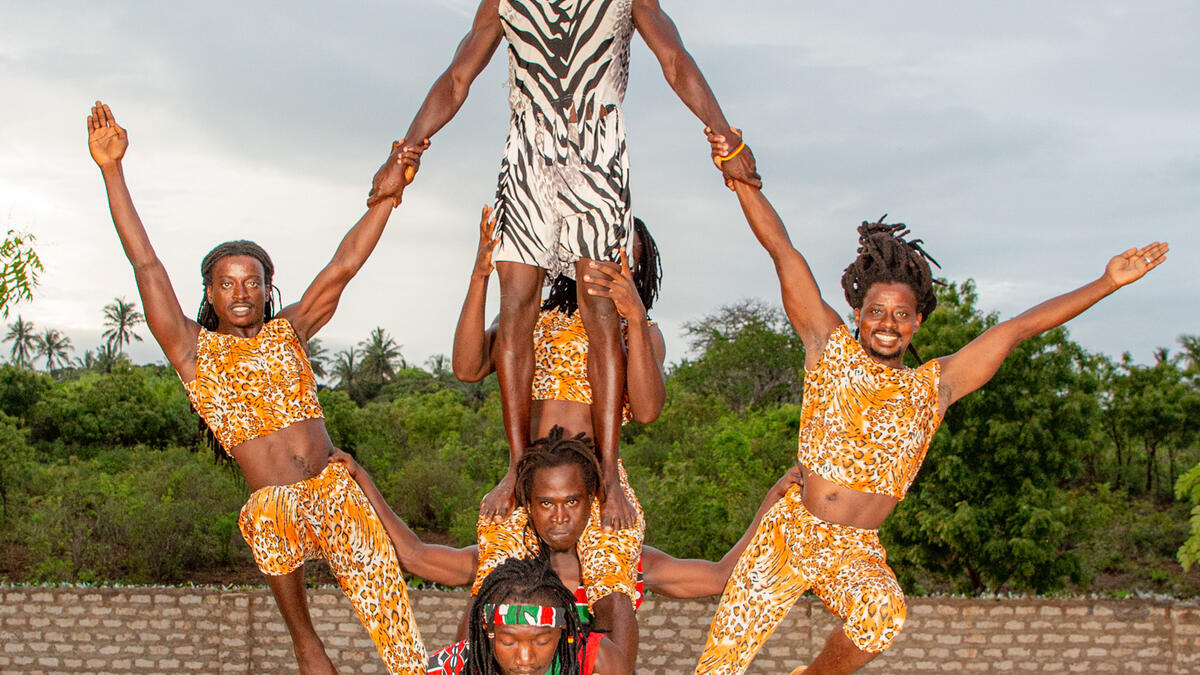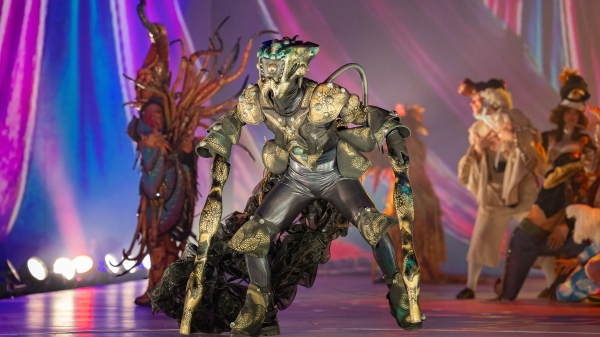ASU study focuses on precarious lives of Kenyan acrobats

The Diani Mambo acrobats draw on centuries-old performance traditions of the Giriama people. Photo courtesy Swakeh Salim Abdallah
Acrobatics are a form of human expression that unites people across the planet, with studies showing that it enhances empathy among both performers and audiences alike. Audiences join in the acrobatic experience through viewing, raising the emotional potential, known as kinesthetic empathy, and desire for connection.
In Kenya, acrobatics offers a pathway for marginalized young men to find employment in hotels and other venues.
Professors Nina Berman, with Arizona State University's School of International Letters and Cultures, and Micha Espinosa, with ASU's School of Music, Dance and Theatre, are studying Kenyan acrobatics and have been conducting fieldwork with the professional troupe Diani Mambo Acrobats Group in Kenya over the 2022–23 academic year. Mary Otieno, from the Education Management department at Kenyatta University, is consulting on the project.
Diani Mambo acrobats are members of the Giriama ethnic group in Kenya. Like many other acrobats of the global south, Giriama acrobats are marginalized. They often work under exploitative conditions, whether performing locally or internationally, and struggle to earn enough to care for their families. In Kenya, performing artists are paid meager wages and rarely have opportunities to receive government or private-sector support.
The Diani Mambo acrobats draw on centuries-old performance traditions of the Giriama people. The group is innovating its cultural heritage by combining acrobatic acts with dancing, comedy, drumming and singing in hopes of finding new audiences and economic stability. However, as acrobats in Kenya usually perform in hotels catering to tourists, these traditions are rarely shared with Kenyan audiences.
"The circus arts are community-based, and the dream would be to have a training center where performing artists of any age can train in tumbling, balancing, juggling, floor and ring acrobatics," Espinosa said. "Beyond physical education, the circus arts contribute to mental well-being, mind-body integration and social transformation by engaging with at-risk communities."
Berman, Espinosa and Otieno aim to address the precarious situation of performing artists in Kenya by investigating the factors that constitute the impediments to success, developing a paradigm to create better lives through economic stability and improved access to resources, and further realizing the artists' role in the relationship between cultural investment, economic development and social impact.
Berman, who has been conducting research in Kenya since 1998, said, "We are excited to work with these talented artists and hope to bring attention to their unique performance traditions."
Espinosa and Berman received funding from the Institute for Humanities Research in support of this project.
More Arts, humanities and education

ASU alumna makes her way back to the ASU Gammage stage for '¡azúcar!'
As the Los Angeles-based CONTRA-TIEMPO dance group prepares for its upcoming production “¡azúcar!” at ASU Gammage, for one member…

ASU FIDM professor wins international award for fantastical, sustainable creation
The horror of an ailing Earth inspired an Arizona State University fashion professor to create a fantastical garment out of…

ASU workshop trains educators, professionals from marginalized communities in disaster science
As devastating as hurricanes can be to anyone caught in their paths, they strike marginalized communities even harder.To address…